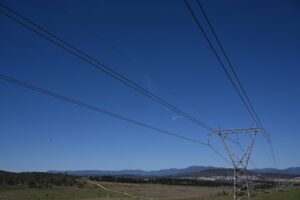The conservative Coalition government of Prime Minister Tony Abbott has dumped the last significant renewable energy assistance program and a host of other climate and science based research initiatives, as it bets the country’s economic future on a massive road building program and continued support for miners.
Treasurer Joe Hockey’ first budget – delivered Tuesday night – includes the abolition of the $3.1 billion Australian Renewable Energy Agency, an institution formed to help bring new and emerging technologies into production and deployment, and to help fund Australia’s world-leading solar research.
ARENA will maintain funds of $1 billion for around 190 projects – mostly R&D – that have already been contracted since its creation in 2012, but it will have a measly budget of just $15 million over each of the next two years for new projects.
As foreshadowed by RenewEconomy in early March, ARENA’s functions will be absorbed into the Department of Industry, although a defiant ARENA chairman, Greg Bourne, said the agency would continue its legislated role until a repeal bill passed through parliament, something that the government may not find easy.
ARENA, in the meantime, will continue the work it is legislated to do, including sifting through some 190 proposals worth more than $7.7 billion, many of them from miners looking to tap into ARENA’s $400 million off-grid program.
ARENA was not the only victim of Hockey’s knife, which in the broader economy included sharp cuts to welfare payments and education, with students, families and single parents judged to be among the hardest hit.
The million solar roofs program – like ARENA a core pre-election promise from the Coalition and a founding part of its “Direct Action” program, appears to have sunk without trace, and without funding.

However, the government has allocated $2.55 billion “over 10 years” for the Emissions Reduction Fund, the core plank of the government’s Direct Action policy, which it wants to replace the carbon price.
The ERF has been described by bankers and analysts as a laughable attempt and “wishful thinking” at reaching even a modest 5 per cent emissions reduction target by 2020. (It turns out that the 10 years was a “printing mistake” in the budget papers, much like when Hockey announced last week he would close the Clean Energy Regulator, when really he meant the Clean Energy Finance Corporation, so it’s funding beyond 2017 remains unclear. John Connor explains more about the funding confusion here).
The government – which says it is cutting funding from ARENA because all sections of the community need to “pull their weight” – will instead spend $525 million over four years to pay low wages to a 15,000 strong “green army” of under 25s that will pick up litter and repair mangrove swamps.
ARENA chairman Greg Bourne said he was bitterly disappointed, and noted that if this and the carbon price, the repeal of the Clean Energy Finance Corp, and a reduction in the renewable energy target were to pass through parliament, then the new government would have effectively “cleared the decks regarding clean energy.
“From there, the question is what you build,” he said. “The government is leaving behind a set of options that would allow it to accelerate the deployment of clean energy, and they may well need those options in the future. We are trying to build the infrastrucure of the 21st century in terms of energy.:
Instead, the government is focused only on building the roads of the 21st Century. Most of the funds saved from these cuts will be used for “government spending priorities”, which appear to be “road infrastructure” what Hockey has described as the biggest ever increase in road funding in the nation’s history.
In place of the million roofs program, which was at once stage budgeted for $1 billion, the government has announced a derisable $2.1 million for “community” solar projects on RSL and bowling clubs and the like in 7 marginal electorates. (Yes, they are that cynical).
The Government has also cut $459.3 million (or around three-quarters) of funds from the Carbon Capture and Storage Flagships Program, bringing an end to any new projects or initiatives for a technology that institutions, such as IEA, say is a critical component of decarbonising electricity grids, but for which the coal industry was never much more than a marketing term (see clean coal).
It has cut $16.8 million over two years from the National Low Emissions Coal Initiative, and has slashed $111.4 million over four years from the Commonwealth Scientific and Industrial Research Organisation, the main scientific research body.
A further $10.0 million will be cut from the budget from the Bureau of Meteorology, although it will provide $100,000 to fit out what must be a very small “consolidated supply and logistics warehouse.”
It will also cut $21.7 million over four years through the amalgamation of the National Environmental Research Programme and the Australian Climate Change Science Programme to form a new National Environmental Science Programme.
The clean energy industry, and environmental NGOs, needless to say, were appalled, particularly as subsidies such as the diesel excise exemption for mining companies remained in place, at a cost of $2 billion a year.
John Grimes, from the Australian Solar Council, described the budget as a “boulevard of broken dreams” for the industry. The Budget has delivered a trifecta of broken promises to the solar industry,” said John Grimes, Chief Executive of the Australian Solar Council.
“For decades, Australian solar researchers have led the world, developing the solar technologies of today and the future, but that all ends today.”
WWF Australia’s Kellie Caught described it as an “attack on renewable energy programs”, while Environment Victoria’s Mark Wakeham described it as a “freeway builder’s dream.”
Clean Energy Council Deputy Chief Executive Kane Thornton said many companies had been driving innovation in exciting new technologies like large-scale solar, geothermal and ocean energy, and now the development and commercialisation of homegrown innovations will likely go offshore, along with the jobs and investment they would bring.
“A global race for renewable energy is on, and the removal of ARENA will see potential Australian and international investors now look to countries with much stronger support for renewable energy innovation, meaning we may well miss out on billions of dollars of investment and highly-skilled jobs,” Thornton said.








